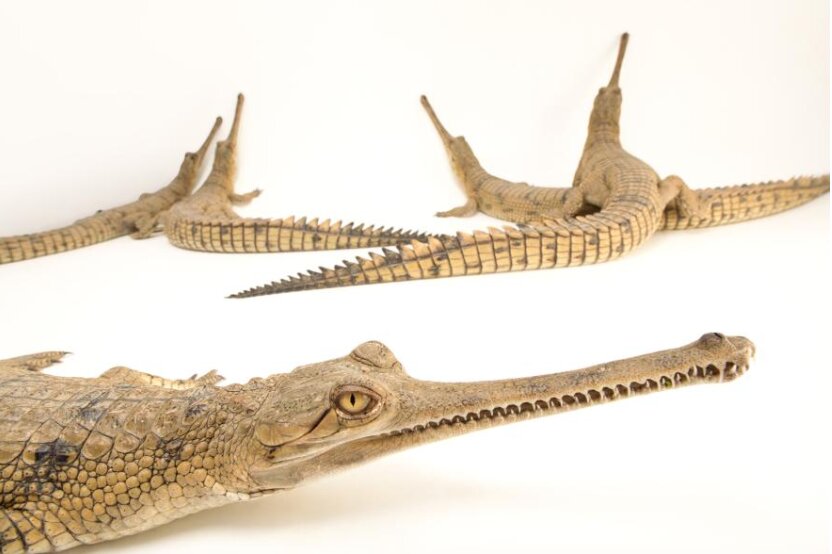Context
-
Recently, the sight of an adult Gharial, a common crocodile species, surrounded by 28 hatchlings at the Satkosia gorge in the Mahanadi river, the southernmost limit of the gharials’ home range in India, has brought a smile to the faces of Odisha’s Forest Department officials.
About Gharials
-
They thrive on small fish. Their prey base was eroding due to over-fishing by local fisherfolk. Moreover, they are shy reptiles.
- Abundant in the main rivers and tributaries of the Indus, Ganges, Brahmaputra and Mahanadi-Brahmani river system, are now limited to only 14 widely spaced and restricted localities of India and Nepal.

- The Satkosia gorge in the Mahanadi is the southernmost limit of their home range and the last home of gharials.
- Odisha is the only State in India having all three species of crocodiles (gharial, mugger and saltwater crocodiles) found in nature.
- The State Forest Department has begun conservation of these three crocodile species since 1975 by establishing three rearing centres — Tikarpada for gharials in Angul district, Ramatirtha for muggers in Mayurbhanj, and Bhitarkanika for saltwater crocodiles in Kendrapara district.
Back to Basics
Habitats
- A major chunk of the species in India is found in the Chambal river
- However, there are satellite populations of less than 100 adults in the Girwa river (Katarniaghat Wildlife Sanctuary in Uttar Pradesh), the Ramganga river in Jim Corbett National Park and the Sone river.
- The Ghaghara is one of the cleanest rivers of India as there is hardly any pollution.
- They are a good indicator of clean river water.
- They prefer sandbanks as suitable habitats.
Conservations
- Gharial (Gavialis gangeticus): International Union for Conservation of Nature (IUCN)- Critically Endangered.
- Mugger crocodile (Crocodylus palustris): IUCN- Vulnerable
- Saltwater crocodile (Crocodylus porosus): IUCN- Least Concern
- Schedule I of the Wild Life (Protection) Act, 1972.
- Appendix I of Convention on International Trade in Endangered Species of Wild Fauna and Flora (CITES).
Species in News: Click Here
